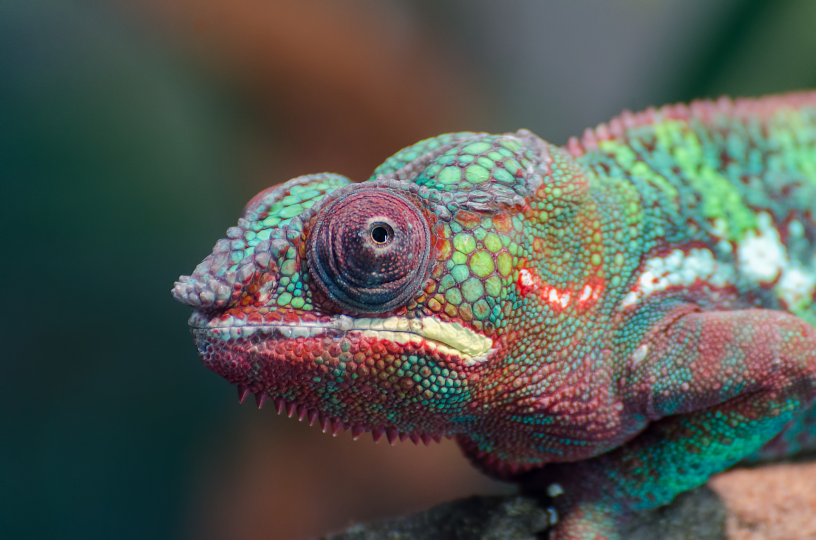Chameleons are super cool lizards. I don’t think anyone can deny that. But I didn’t know just how awesome they are until I read up on them for this post. It always astounds me just how little I know of the animal world; no matter what I blog about I always find things I didn’t know about. That’s what makes this blog great, right?
There are over 200 species of chameleon that live in a variety of places, including Africa, southern Europe, and western Asia. The majority of species are found in southern Africa and on Madagascar. They can live in lots of different environments, including rain forests, grasslands, mountain forests and sometimes even deserts. Most species of chameleon live in trees, and are highly adapted to this lifestyle.

Image By Movingsaletoday edited by Muhammad – Own work, Public Domain
One of the main things that help chameleons enjoy a happy life in the trees is the structure of their feet. The toes on each foot are fused together into two groups, making the foot look like a crab claw. These feet not only give the chameleon super funny looking feet, but also are very useful for gripping tree branches. The toes also have sharp claws protruding from them which help the chameleon climb.
Chameleons are most famous for their ability to change colour, something that they accomplish by using special cells called chromatophores. The chameleon has three layers of chromatophores in their skin: a yellow and red layer, a blue and white layer, and a melanin layer, which controls the reflection of light. By manipulation of these layers, chameleons can change into a number of different colours. Colour changes are used for a number of different purposes, not just camouflage. Some species use colour change as a signalling device – they turn darker when angry, but are light and colourful during courtship displays. Desert chameleons use colour change to help with thermoregulation, turning dark in the mornings to get as much heat as possible, and changing to a light colour during the hottest part of the day.

Image By Frank Glaw, Jörn Köhler, Ted M. Townsend, Miguel Vences – Glaw F, Köhler J, Townsend TM, Vences M (2012) Rivaling the World’s Smallest Reptiles: Discovery of Miniaturized and Microendemic New Species of Leaf Chameleons (Brookesia) from Northern Madagascar. PLoS ONE 7(2): e31314. doi:10.1371/journal.pone.0031314, CC BY 2.5,
Other notable features of chameleons are their strange-looking eyes and crazy long tongue. Chameleon eyes are very odd. The eyelids are fused together so that only the pupil is revealed, and each eye can move independently. This gives the chameleon full 360 degree vision. They have quite good vision, and are able to see insects from five to ten meters away. Chameleon tongues are designed for the mostly insect-filled diets that almost all species partake in. Chameleons can extend their tongue one and a half to two times the length of their bodies. This happens extraordinarily fast, with tongues able to reach prey in 0.07 seconds. Prey is stuck to the tongue once hit; the tongue has special mechanisms to hold prey in place once caught. Watching chameleons catch prey in slow motion is really cool – I suggest you google it.
With all these crazy features that make chameleons unique among reptiles, it’s no surprise that these lizards are popular pets. Other species are threatened by habitat destruction and pollution, putting many chameleons at risk of extinction. It would be a terrible shame if these quirky, colourful guys disappeared, so let’s hope we can stop that!

>> no matter what I blog about I always find things I didn’t know about. That’s what makes this blog great, right?
That, and because you emphasize the animal itself and what makes it cool or interesting in the here and now, without getting caught up into unverifiable prehistory.